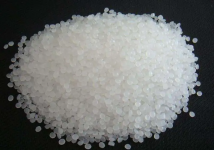read: 763 time:2025-07-16 14:23:25 from:化易天下
When working with various solvents in the chemical industry, understanding their effects on different materials is crucial. One common question that arises is, "Will acetone dissolve rubber?" This question is particularly important for professionals who deal with maintenance, cleaning, or manufacturing processes involving rubber components. In this article, we will explore the interaction between acetone and rubber, providing detailed insights into what happens when these two substances come into contact.
Acetone, a colorless and highly volatile liquid, is one of the most widely used solvents in both industrial and household applications. Its chemical formula is C₃H₆O, and it belongs to the ketone family of organic compounds. Acetone is known for its excellent ability to dissolve many organic substances, making it useful in applications such as cleaning, degreasing, and paint thinning. However, when it comes to rubber, the effects of acetone can be more complex.
Rubber is a versatile material used in countless applications, ranging from automotive tires to household items. However, it's important to note that not all rubber is the same. Natural rubber is derived from latex found in rubber trees, while synthetic rubbers are made from petroleum-based chemicals and include varieties like nitrile, neoprene, and silicone rubber. Each type of rubber has a different chemical composition, which influences its resistance or susceptibility to solvents like acetone.
Now, let's address the core question: Will acetone dissolve rubber? The answer largely depends on the type of rubber in question. Generally, acetone is a strong solvent for organic materials and can break down some types of rubber. For example:
Natural Rubber: Acetone can cause natural rubber to swell, weaken, and potentially dissolve over time. This is because the acetone breaks down the polymer chains within the rubber, leading to its degradation.
Nitrile Rubber (NBR): This type of rubber is more resistant to solvents than natural rubber. However, prolonged exposure to acetone can still cause nitrile rubber to soften and lose its structural integrity.
Neoprene Rubber: Neoprene is more resistant to acetone, but it is not completely immune. Extended contact with acetone can cause neoprene to degrade, though it may not completely dissolve.
Silicone Rubber: Silicone rubber is known for its chemical resistance, and acetone has minimal impact on it. While acetone may cause some minor swelling, it is unlikely to dissolve silicone rubber.
Given the varying effects of acetone on different types of rubber, it is essential to consider the specific application when deciding whether to use acetone as a solvent. For instance, if you're cleaning a surface that includes rubber components, knowing the type of rubber will help you avoid accidental damage. If acetone must be used, it is advisable to test it on a small, inconspicuous area first to observe any potential adverse effects.
Moreover, in industrial settings where rubber is exposed to solvents regularly, selecting the right type of rubber for the job is critical. Materials like silicone or neoprene may be preferred in environments where contact with acetone is unavoidable.
So, will acetone dissolve rubber? The answer is nuanced and depends on the type of rubber being used. While acetone can dissolve or degrade some forms of rubber, others may resist its effects. Understanding the chemical composition of both the rubber and the solvent is key to making informed decisions in industrial and practical applications. By being aware of these interactions, you can better protect your materials and ensure the longevity and effectiveness of rubber components in your projects.

Jincheng Petrochemical's 300000 ton polypropylene plant successfully trial production, 2024 polypropylene market analysis

The ABS market remains sluggish, what is the future direction?

Market differentiation of bisphenol A intensifies: prices rise in East China, while prices generally decline in other regions

The production method and process flow of silicone acrylic lotion, and what are the common raw materials